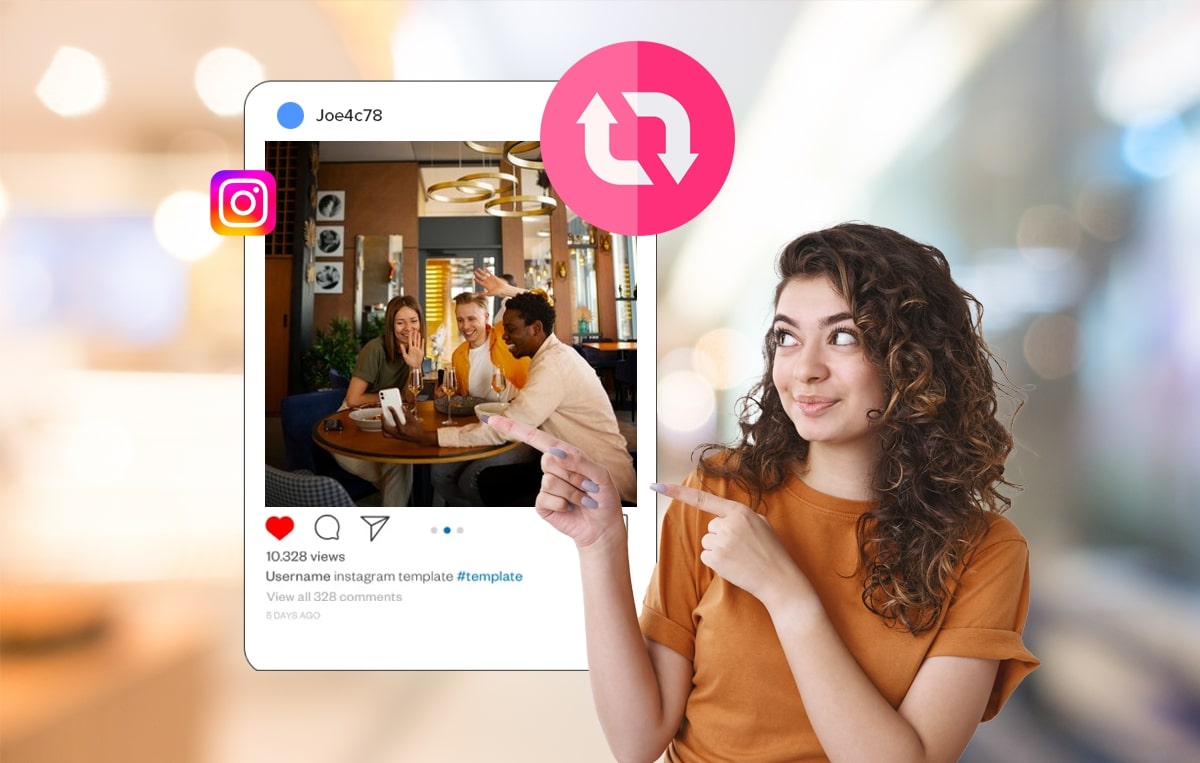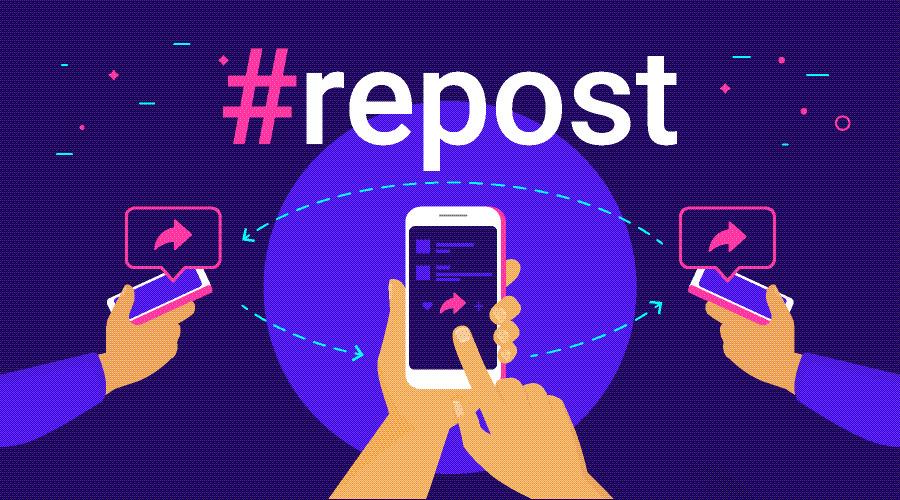Blog
How to Repost on Instagram Without Breaking Rules (2025 Guide)
Want safe growth on Instagram? Explore our curated services for Instagram followers and real views — optimized for brand safety and long-term retention. Boost your Instagram growth with transparent packages and expert support.
How to Repost on Instagram Without Breaking Rules (2025 Guide) #
To understand how to repost on Instagram without breaking rules, it’s important to know why reposting has become a cornerstone of modern Instagram strategy. Whether you’re a brand, creator, or social media manager, sharing other users’ posts — known as User-Generated Content (UGC) — can skyrocket engagement, build authenticity, and fill your content calendar with minimal effort.
But in 2025, the rules have evolved. Instagram’s algorithm and Meta’s updated copyright enforcement system now automatically detect duplicate or uncredited content. Violating reposting guidelines can lead to content removal, shadowbans, or even account restrictions. That’s why understanding how to repost on Instagram without breaking rules legally and ethically is critical for every creator and brand.
This in-depth guide walks you through everything you need to know — from requesting permission and giving proper credit, to using third-party repost tools safely and avoiding copyright violations in Reels, Stories, and Feed posts. You’ll also learn about Instagram repost legal rules 2025, practical examples of attribution, and how to turn UGC reposts into a brand-building strategy — without risking takedowns or reports.
By the end of this guide, you’ll know exactly how to:
- Repost Instagram photos, Reels, and Stories legally and professionally.
- Use Instagram repost best practices 2025 for brand or business accounts.
- Avoid copyright strikes, reports, or account restrictions.
- Automate reposting safely using approved Meta Business tools and trusted apps.
Let’s dive into the proven methods used by top brands and creators who repost Instagram content the right way — combining ethical strategy, legal awareness, and community trust.

Why Reposting Still Works in 2025 #
Understanding how to repost on Instagram without breaking rules starts with recognizing that reposting isn’t just a shortcut — it’s a strategic content accelerator. When done right, it can multiply your output, strengthen social proof, and nurture a loyal community around your brand. Featuring your followers’ photos, reviews, tutorials, or “before-after” transformations creates an authentic feedback loop that modern audiences love. In 2025, community-driven reposting is one of the fastest-growing content trends on Instagram.
For brands, compliant reposts boost trust, transparency, and engagement — audiences are more likely to purchase from companies that showcase real customers. For creators, reposting is a reputation-builder: it shows expertise, collaboration, and awareness of the wider niche. Each credited repost sends a clear message — you’re not just creating content, you’re curating a movement.
To optimize both performance and compliance — especially when learning how to repost on Instagram without breaking rules — mix your repost strategy with native Instagram formats — Reels, Carousels, and Stories. This combination keeps your profile algorithmically active while maintaining credibility and authenticity. Avoid over-reposting or flooding your grid — quality always outweighs volume.
When planned strategically, reposting can serve as a bridge between community appreciation and brand storytelling. It allows you to stay active, grow visibility, and connect authentically — all while respecting Instagram’s evolving rules on content reuse and understanding how to repost on Instagram without breaking rules.
Tip: Mix compliant UGC with original Reels to keep your feed human and dynamic. Optimize captions with hooks and CTAs using our caption templates.
Legal Basics: When You Can (and Can’t) Repost on Instagram in 2025 #
When learning how to repost on Instagram without breaking rules, it’s essential to understand that on Instagram, the original creator automatically owns the copyright to their photos, videos, and captions — not you, and not the platform. Even if content is publicly visible, that doesn’t make it “free to reuse.” Under Instagram’s Terms of Service and international copyright law, each post remains the intellectual property of its author. Unauthorized reposting can lead to DMCA takedowns, content strikes, or even account suspension.
In practice, you need explicit permission before resharing someone’s post on your feed, Reels, or even Stories if it’s for commercial use.
Giving visible credit (for example, “📸 @username” in caption) is good etiquette and builds trust —
but credit alone is not a license. Think of it as “good manners,” not legal protection.
⚠️ Important: Using another creator’s photo, video, or Reel in your marketing — even with credit — can be considered copyright infringement if no permission was granted. Always ask first, and store proof of agreement (screenshot, email, or DM confirmation).
The term “fair use” often gets misinterpreted. It only applies to specific cases such as critique, commentary, parody, education, or news reporting. If your repost helps you gain exposure, followers, or revenue, it’s not fair use. For instance:
- ✅ Allowed: Sharing a meme inside a private chat or educational presentation (with attribution).
- 🚫 Not allowed: Reposting a trending Reel on your business page to promote your service.
Here’s how to stay compliant with Instagram repost legal rules 2025:
- Ask permission every time before reposting — DM or email works fine.
- Keep a screenshot or message of consent for your records.
- Tag the creator in both caption and media whenever possible.
- Use “Reposted with permission from @username” to show transparency.
- Don’t edit or crop others’ content without their approval.
| Scenario | Permission Needed? | Legal Status |
|---|---|---|
| Reposting a customer’s photo on your brand feed | ✅ Yes — always ask first | Legal if credited and approved |
| Sharing someone’s Story that tags your account | Optional | Allowed (built-in feature) |
| Using memes or trending Reels without author credit | ❌ Not safe | Copyright violation possible |
| Reposting for ads, collaborations, or promotions | ✅ Must have written consent | Illegal without authorization |
| Embedding Instagram content on your website | Depends | Generally allowed under Meta’s API terms |
Unsure if a repost is safe? The best approach is simple — ask before you post. Most creators appreciate being featured, especially when credited properly. A quick message like “Hey, may we share this on our page with credit?” takes 10 seconds and prevents major problems later.
💡 Pro tip: If your brand regularly features community content, create a UGC policy statement in your bio or website footer. Example: “We may share tagged posts with credit. Use #MyBrand to consent.” This builds transparency, encourages submissions, and keeps you compliant with Meta’s content-sharing standards.
Treat others’ content as you’d want yours treated — with respect, transparency, and documentation. Following these simple principles protects your reputation and ensures every repost supports your growth — not legal risk — while aligning with how to repost on Instagram without breaking rules.
When You Need Permission (and When You Don’t) #
When learning how to repost on Instagram without breaking rules, understanding permission cases is essential.
| Scenario | Do You Need Permission? | Notes |
|---|---|---|
| Reposting a user’s photo/video to your feed/Reel | Yes | Get written consent (DM/email). Always credit handle + link to the original. |
| Sharing someone’s post to your Story via native “share to Story” | Usually No | Within app context it’s allowed by design, but respect removals/blocks and creator’s settings. |
| Embedding a public post on your website | Platform-allowed | Use official embed; still credit the author. For commercial use, ask permission. |
| Reposting UGC from a custom hashtag contest (#YourBrand) | Yes | Contest T&Cs should state reuse rights. Still ask/confirm and credit. |
| News reporting / commentary (transformative) | Depends | Jurisdiction-specific; consult counsel. When in doubt, request permission. |
Pro workflow: Create a short consent template: “Hi {Name}! We love your post. May we share it on our Instagram feed (and possibly website/email), with full credit to @handle? Reply ‘Yes’ to confirm.” Screenshot the “Yes.” Store in a shared “UGC permissions” folder.

How to Credit Properly (Caption Templates) #
When applying how to repost on Instagram without breaking rules, credit must be visible and specific: mention the creator’s @handle in the first lines and, where possible, link the original post in Stories. Avoid tiny credits at the end of long captions. Make it obvious who created the work.
- Put @creator in the first caption lines.
- Add context (“Captured by…”, “Recipe by…”, “Concept by…”).
- If applicable, include licensing note (“Shared with permission”).
- Tag the creator on the media (photo/video) and in the post settings.
- In Stories, add tappable mention sticker and optional link to original.
Template — Brand feed:
“Shared with permission from @creator — this before/after is too good not to post 🤍 Full credit: concept & edit by @creator. Want your work featured? Tag #BrandTag.”
Template — Creator collab:
“Repost via @creator (used with permission). We loved this tip on lighting for Reels — try it with our guide on creating videos like top brands.”

Also helpful: If your caption is long (e.g., tutorial), repeat the credit near the end so it shows in preview + expanded view.
Instagram’s Native Repost Feature (2025): What It Covers #
When mastering how to repost on Instagram without breaking rules, remember that Instagram continues to expand in-app sharing flows (e.g., share a post to Stories, recommend posts via DMs, collaborative posts). These flows are allowed by design and safer than downloading/re-uploading files — but they don’t grant you blanket rights to publish on your feed or use content in ads. If you want the content on your profile (as a new post/Reel), ask permission.
Privacy & safety: If a creator switches their account to private or deletes the original post, your reshared Story preview may break. Respect the original author’s intent and promptly remove your repost if requested.
FAQ: How to Repost on Instagram Without Breaking Rules #
Safer alternatives include verified tools like Later, Buffer, and Metricool, which comply with Meta’s API. These tools let you schedule reposts securely while maintaining proper attribution.
UGC advertising is powerful — it increases authenticity and trust — but it must always be done ethically and transparently.
Treat the button as a technical convenience, not a legal shield.
Official References & Trusted Sources
- 📘 Instagram Help Center – Copyright Policy & Reporting
- ⚖️ Meta Transparency Center – Intellectual Property Guidelines (2025)
- 🧠 Instagram Blog – Repost Feature and Content Attribution Update 2025
- 🧾 Buffer – Instagram Repost Best Practices for Brands (2025)
- 🪶 Later – Full Instagram Reposting Guide 2025
- 📊 HubSpot – Using User-Generated Content Safely on Instagram


Comments
Comments section coming soon...